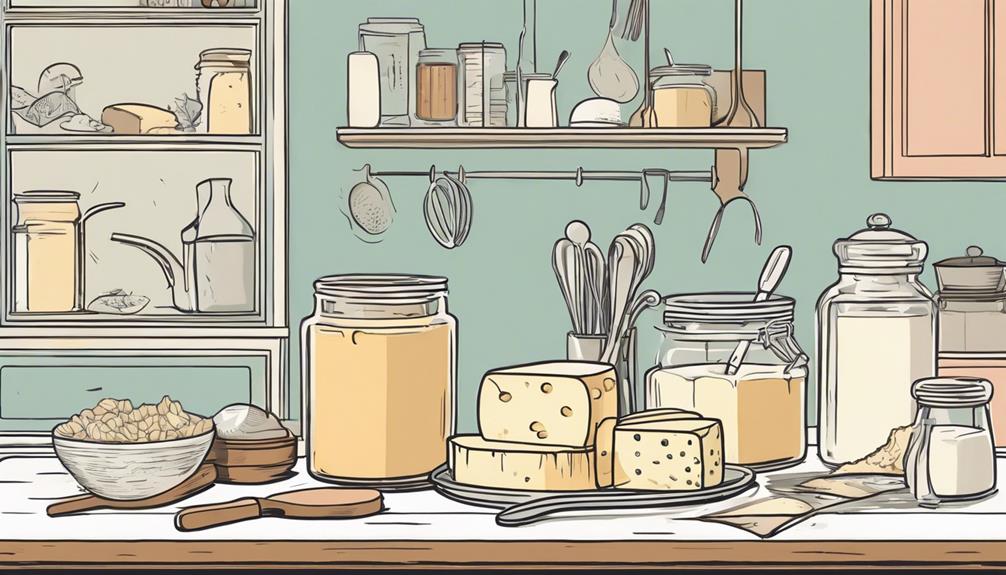How To Become More Self-Sufficient Without Starting a Full-Blown Farm…
Want to start preserving your harvest, making your own soap, or building a backyard root cellar — but not sure where to begin? “Homesteading Advice” gives you instant lifetime access to 35+ practical homesteading books on food preservation, veggie gardening, DIY natural cleaning products (save over $250 per year with this skill alone), brewing, off-grid energy, and a whole lot more…
Click Here To Check It Out Now!
“I’ve finally decided to start making my own cheese at home, but I’m a bit stuck on one of the crucial steps. Specifically, I’m not sure how to properly activate a freeze-dried cheese culture. I’ve got all my ingredients ready, but this part seems tricky and I want to get it right to ensure my cheese turns out perfectly. Any detailed advice on this?
Thanks,
Kyle, Houston, USA.
How Do You Activate A Freeze-Dried Cheese Culture?
Hey Kyle! So excited to hear that you’re diving into the world of cheese making at home. It’s such a rewarding process, and getting your cheese culture right is absolutely key to achieving great results. Let’s break this down step by step so you can get it right the first time.
Understanding Freeze-Dried Cheese Cultures
Before we get into the activation steps, it’s helpful to understand what freeze-dried cheese cultures are. Essentially, these are mixes of bacteria that have been freeze-dried so they can be stored for a long period without losing their activity. When you’re ready to make cheese, you’ll need to “wake them up” by hydrating them properly.
Why Proper Activation Is Important
Proper activation of your cheese culture is crucial because:
- Consistency: Ensures a consistent flavor and texture in your cheese.
- Efficiency: Allows the bacteria to work at their optimum levels right from the start.
- Safety: Reduces the risk of unwanted microorganisms taking over, ensuring your cheese is safe to eat.
Steps to Activate Freeze-Dried Cheese Cultures
Let’s get down to the nitty-gritty of activating those freeze-dried cultures. Here are the steps in detail:
-
Prepare Your Environment:
Make sure your workspace and all your utensils are clean and sterilized. Contamination can easily ruin your cheese. Boiling water, and a bit of sanitizer can do wonders here.
-
Use Non-Chlorinated Water:
Chlorine can kill the beneficial bacteria in your culture. If you’re unsure about the water quality, you can use distilled or bottled water.
-
Measure The Right Amount:
Follow the instructions on your culture packet for the right amount to use. Too much or too little can impact the final product. This step ensures the bacteria have enough food and space to thrive.
-
Warm Up The Water:
Heat a small amount of non-chlorinated water to around body temperature (about 90-100°F or 32-38°C). Too hot, and you might kill the bacteria; too cold, and they won’t activate properly.
-
Add The Culture:
Sprinkle the freeze-dried culture onto the surface of the warm water. Avoid clumping by spreading it evenly. Allow it to sit undisturbed for a few minutes. This rehydration is the first critical step.
-
Mix Gently:
After letting it sit, gently stir the water to fully dissolve the culture. Use a clean, sanitized spoon for this step.
-
Wait A Bit:
Let the mixture sit for about 15-20 minutes. This gives the bacteria time to wake up and start multiplying.
-
Incorporate Into Your Milk:
Once your culture is activated, add it to your milk for cheese making. Make sure your milk is at the right temperature for the specific cheese you’re making (this usually falls between 85-90°F or 29-32°C).
Tips and Common Pitfalls
Let’s cover a few additional tips to ensure smooth sailing:
-
Temperature Is Key:
If the water or milk is too hot or too cold, the bacteria won’t thrive. Always use a thermometer for precision.
-
Avoid Contamination:
Always work in a clean environment and use sanitized equipment. Even small amounts of contaminants can spoil your batch.
-
Check Shelf Life:
Ensure your freeze-dried culture is within its expiration date. Old cultures may have reduced activity.
-
Hydration Time:
Don’t rush the rehydration process. The bacteria need time to wake up and get active.
-
Storage:
Keep your freeze-dried cultures in the refrigerator or freezer until you’re ready to use them to extend their shelf life.
Examples of Cheese Types and Their Cultures
You’re probably wondering which types of cheese you’re aiming to make. Here’s a brief overview:
-
Cheddar:
Uses mesophilic cultures, which thrive at moderate temperatures.
-
Swiss:
Utilizes thermophilic cultures, which can handle higher temperatures during cooking.
-
Camembert and Brie:
These soft cheeses often use a combination of mesophilic cultures and specific molds, such as Penicillium candidum.
-
Yogurt:
Though not a cheese, it’s good to know that yogurt requires thermophilic cultures, similar to Swiss cheese.
FAQ Section
How Long Can I Store Activated Culture?
Once activated, cultures should be used immediately for best results. Storing activated cultures can be tricky as they might lose potency, so it’s best to plan your cheese-making process to use them right away.
Can I Reactivate the Same Culture Multiple Times?
No, typically once a freeze-dried culture is activated, it should be used within that batch of cheese. Reactivating the same culture multiple times can lead to inconsistency and potential contamination.
Why Non-Chlorinated Water?
Chlorine is an effective disinfectant and can kill the beneficial bacteria in your culture. Using non-chlorinated water, such as distilled or bottled, ensures that the bacteria can thrive and do their job.
Final Thoughts…
Kyle, I hope this breakdown makes the process of activating your freeze-dried cheese culture a lot clearer and less daunting. Remember, the key is precision and cleanliness. With these steps in mind, you should be well on your way to creating delicious homemade cheese. Thanks for your great question, and good luck with your cheese-making adventure!

